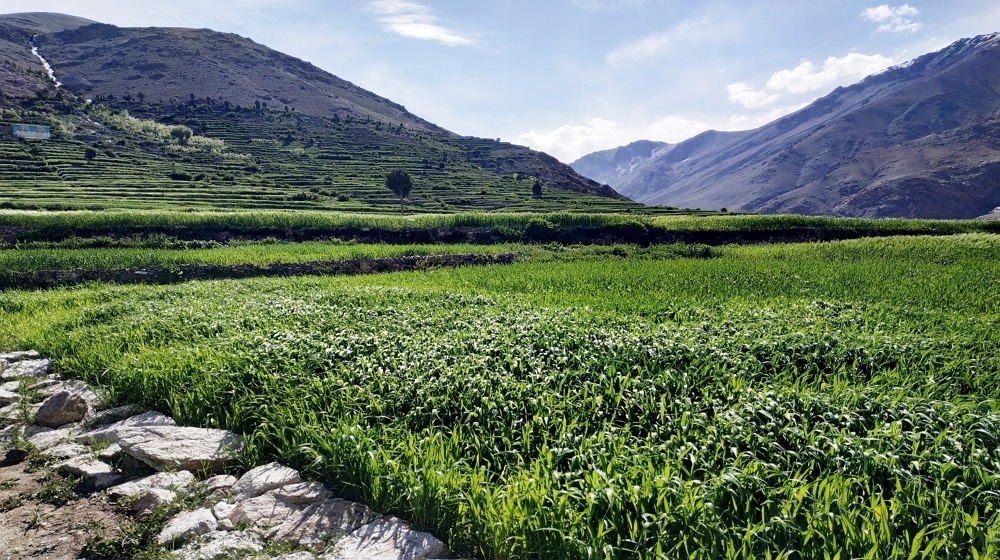There is no solid evidence about the ancient history of Baltistan. However, according to historians, Mongolian nomads came here with their livestock in search of pasture and settled around 3,000 years ago.
Later the population expanded rapidly with the passing of time and at the same time, the region’s geography also shifted, accompanied by snow melting, land sliding and flooding.
Medieval history of Baltistan
In medieval history, Baltistan was regarded as “Little Tibet.” This is because the majority of the inhabitants are culturally and linguistically Tibetan in origin.
The people of Baltistan were followers of Buddhism before the 13th century, due to the influence of Gandharan missionaries and consequently Tibetan rule.
In 1400 AD the entire population became Muslim when an infantry of Muslim preachers led by Mir Syed Ali Hamdani visited Central Asian states and Kashmir including Baltistan to preach Islam.
Then land called Tibbet emerged that was also known as Lhasa. The present Baltistan was also a part of Tibbet because in the medieval ages Baltistan was known as “Little Tibet.” This is because the majority of the inhabitants are culturally and linguistically Tibetan in origin.
Due to the influence of Gandharan missionaries and consequently, of the Tibetan rule, Buddhism flourished here from the third to the seventh century AD.
The entire population became Muslim in 1400 AD when Mir Syed Ali Hamdani of Iran’s phalanx of Muslim preachers visited Baltistan traveling through Central Asia and Kashmir. The area then was constituted of princely states.
The ancient history of Baltistan
Bonism used to be a dominant religion in Baltistan often at an early age, among others. As some Bonism traditions also continue to remain in practice in the region, when Buddhism prevailed. Baltistan ‘s famous May Fung festival, which is now celebrated on December 21 in many parts of Baltistan, is considered to be Bonism ‘s remaining.
From the 3rd to the 13th century Baltistan was a hub of Buddhism. Through their travelog, many tourists who have traveled through Baltistan in the past identified Buddhism.
Jhon Budulf, Fahian and Sung Pon and Heavon Sang from China and Hoti chaw from Korea were the ones who came here and wrote about Baltistan ‘s society, and culture and Buddhism worshipers. In addition, the rock carvings made on the rocks are still intact and can be seen at various locations in Baltistan.
Rock Carving
Buddha Rock situated in the village of Manthal near Sadpara Dam is one of Baltistan’s popular tourist spots and historical and archaeological heritage. Twenty leaders are surrounded on this rock by the massive carving of Buddha in a sitting position with two guards standing on the left and right side.
There are some inscriptions of Balti at the bottom of the rock. According to a senior citizen who was able to translate one of the words, “Lonchay Skesa la Sparbi outt” means that the light ignites on Lontchay ‘s birthplace.
It’s said there was a palace in the past in front of this rock where a local Raja Lontchay was born. The palace later washed away by a flood.
This rock carving is expected to have been curved during Raja Lontchay ‘s reign because according to Buddhist tradition they use day after night light on the places where a person is born proving that the lighting place is still intact on the top of the rock nearly 4 by 4-inch box side fireplace.
Local Dynasties
Several rulers and later local rajas ruled Baltistan, among them for centuries the Maqpon dynasty, the Yabgo dynasty and the Amacha dynasty. The most powerful monarchy, however, was of the Maqpon dynasty that ruled the area between the 12th and 18th centuries.
In 1500 AD, the 16th successor of the Maqpon dynasty, Ali Sher Khan Anchan (powerful or great) succeeded in creating a large empire bordering Purang Tibet in the east, Kafiristan Chitral in the west Zojila Pass in the south and Mustagh Karakoram in the north.
His successors did not prove strong enough to keep the empire united after the death of Ali Sher Khan Anchan, so by the year 1840 AD, Raja Gulab Singh of Jammu captured Baltistan after an invasion and ruled until 1947. When Pakistan came into being in 1947, the Baltis also rose up in revolt against the Dogra regime.
By the year 1840 AD Jammu’s Raja Gulab Singh invaded Baltistan, crushing Maqpon ‘s reigning raja Ahmed shah. Dogra raja Gulab Singh was made the Kashmir Maharaja. He ruled over Baltistan until the creation of Pakistan in 1947.
This condition gave the people of Baltistan an opportunity to rebel against the Dogra government, and on 14 August 1948, the 3 people finally declared themselves free from the Dogra Raj.
Accession to Pakistan
When Pakistan came into existence in 1947, the Baltis also rose up in revolt against the Dogra regime and finally, on 14 August 1948, the people of Baltistan succeeded in throwing the Dogra Raj shackles and at the same time voluntarily announced their annexation to Pakistan by the people of Baltistan.
Finally, on 14 August 1948, the people of Baltistan succeeded in throwing the Dogra Raj yokes and at the same time voluntarily announced their annexation to Pakistan by the people of Baltistan.
Since then, Pakistan has been a part of the Northern Areas like Baltistan. But the area’s fundamental rights still hang in the balance, especially when tied in with the question of Kashmir. It is considered a part of the contested territories.
